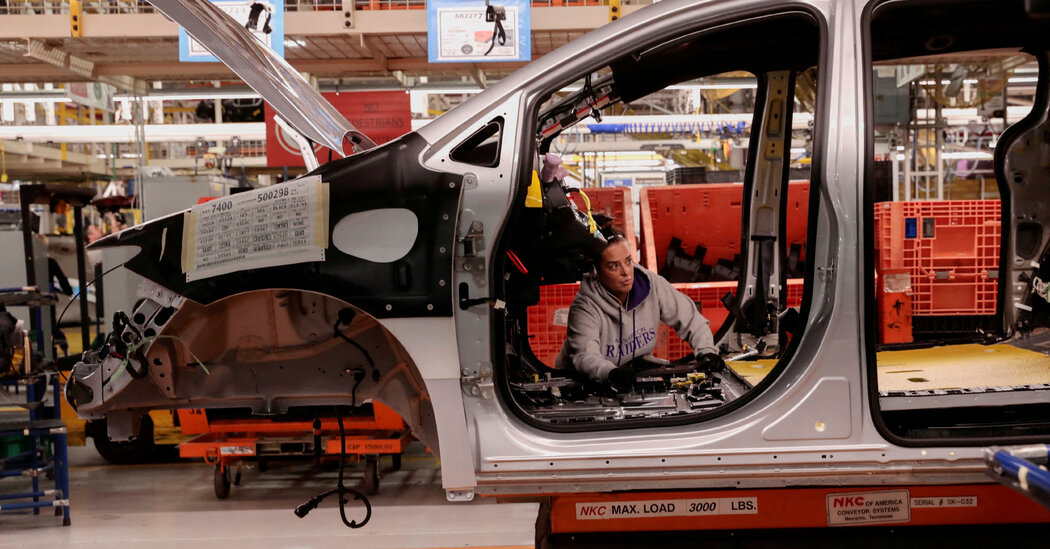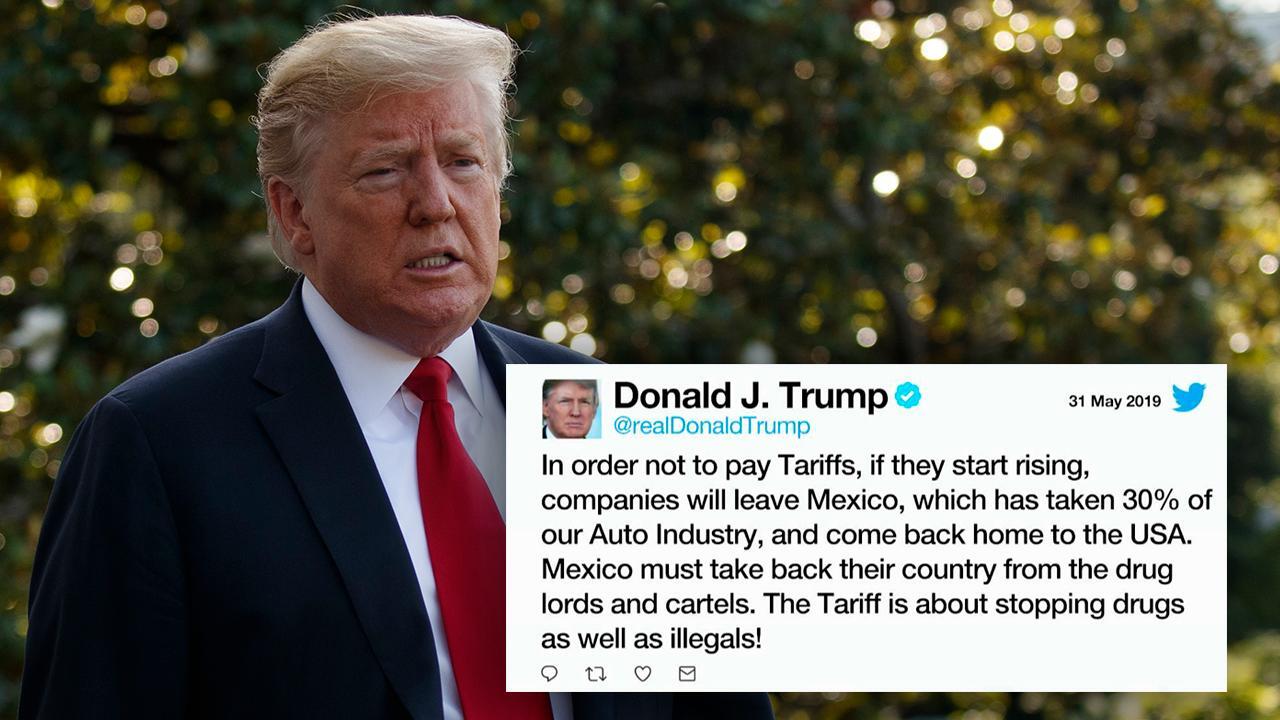How Trump Tariffs Dealt The Biggest Blow To Toyota Among Auto Companies

Table of Contents
The Trump administration's imposition of tariffs on imported goods sent shockwaves through the global economy, but no industry felt the impact more acutely than the automotive sector. While many automakers suffered, Toyota arguably bore the brunt of these trade policies. This article delves into the specific ways Trump's tariffs dealt a significant blow to Toyota, examining the economic consequences and long-term ramifications for the company. We'll explore how increased production costs, supply chain disruptions, and reduced consumer demand significantly impacted Toyota's bottom line and market position.
Increased Production Costs for Toyota Vehicles in the US
The Trump administration's tariffs, particularly those targeting steel and aluminum, directly increased the cost of producing vehicles in the US. For Toyota, heavily reliant on a global supply chain, this translated into significantly higher manufacturing expenses.
Tariff Impact on Imported Parts
Toyota's US manufacturing plants depend heavily on imported parts from various countries. Tariffs increased the cost of these crucial components, driving up the overall price of vehicles.
- Specific Imported Parts: Engines, transmissions, electronic components, sensors, and various interior materials were among the parts sourced internationally. Many of these came from Japan, Mexico, and other countries affected by the tariffs.
- Tariff Increase: The tariffs levied resulted in a percentage increase ranging from 10% to 25% on these imported parts, depending on the origin and type of component. This increase varied depending on the specific component and its country of origin.
- Ripple Effect on Price: This increase in input costs directly impacted the final price of Toyota vehicles sold in the US, making them less competitive. The additional cost wasn't absorbed by Toyota, leading to price increases passed on to consumers.
Reduced Competitiveness in the US Market
The increased production costs resulting from the tariffs placed Toyota at a significant disadvantage against domestic automakers and competitors from countries not subject to the same tariffs.
- Price Comparison: Toyota's price increases were often more substantial compared to those of its competitors, eroding its price advantage in the market.
- Sales Figures: Data showed a clear decline in Toyota's US sales figures following the tariff imposition, reflecting the impact on consumer purchasing decisions.
- Market Share Changes: Toyota's market share decreased as consumers opted for more affordable alternatives from competitors who were less affected by the tariffs.
Disruption of Toyota's Global Supply Chains
The tariffs didn't simply affect production costs; they also significantly disrupted Toyota's carefully orchestrated global supply chains, leading to further challenges.
Tariffs and Trade Relations
The Trump tariffs strained trade relations between the US and key Toyota manufacturing and sourcing partners, creating uncertainty and logistical nightmares.
- Affected Countries: Countries like Japan and Mexico, vital to Toyota's production network, faced significant trade barriers, impacting component delivery and overall manufacturing efficiency.
- Just-in-Time Manufacturing: Toyota's renowned just-in-time manufacturing system, relying on precisely timed deliveries, was severely impacted by the delays and disruptions caused by the tariffs. Inventory management became far more complex and costly.
- Logistical Challenges: Increased customs processing times, added paperwork, and unpredictable delays created logistical bottlenecks and increased transportation costs.
Investment Decisions and Plant Shutdowns
The uncertainty surrounding the tariffs made Toyota hesitant to invest further in its US plants and potentially stalled expansion plans.
- Delayed Investments: Some planned investments in new facilities and technological upgrades were either delayed or scaled back due to the precarious economic climate.
- Employment Impact: The uncertainty caused by the tariffs, coupled with reduced sales, resulted in a slower pace of hiring and, in some cases, job losses.
- Future Investment Planning: The experience significantly impacted Toyota's long-term investment strategies, leading to a more cautious approach to future US market expansion.
Consumer Impact and Reduced Demand for Toyota Vehicles
The impact of the Trump tariffs wasn't limited to Toyota's internal operations. The increased production costs directly translated into higher prices for consumers, impacting demand.
Higher Vehicle Prices
Increased production costs due to tariffs were inevitably passed on to consumers in the form of higher vehicle prices.
- Price Increases: Specific Toyota models saw significant price increases, ranging from several hundred to over a thousand dollars, depending on the model and the number of imported components.
- Consumer Purchasing Power: These price hikes directly affected consumer purchasing power, especially impacting budget-conscious buyers.
- Consumer Sentiment: Consumer sentiment shifted, with many opting for other brands offering similar models at lower prices.
Shift in Consumer Preferences
The price increases made Toyota vehicles less attractive compared to competitors who were less impacted by the tariffs.
- Competitor Brands: Domestic automakers and brands from countries unaffected by the tariffs saw a boost in sales as consumers sought more affordable alternatives.
- Sales Data: Market research data showed a significant shift in consumer preference towards competitor brands, further illustrating the negative impact of the tariffs on Toyota's market share.
- Consumer Surveys: Surveys and consumer reports revealed a clear trend of consumers citing price as a major factor in their choice of vehicle, with many specifically mentioning Toyota's increased prices due to the tariffs.
Conclusion
The Trump-era tariffs delivered a significant blow to Toyota, impacting its production costs, disrupting global supply chains, and ultimately reducing consumer demand. The increased costs of imported parts, coupled with the complexities of navigating trade restrictions, made Toyota uniquely vulnerable compared to some competitors. The experience served as a stark reminder of the interconnected nature of global trade and the far-reaching consequences of protectionist trade policies. Understanding the significant impact of Trump tariffs on Toyota provides valuable insight into the complexities of global trade and its impact on major corporations. Further research into the long-term effects of these tariffs and their implications for future trade policy is crucial. Learn more about the lasting effects of Trump tariffs on Toyota and other auto companies by exploring related articles and resources.

Featured Posts
-
 Rahal Letterman Lanigans Initiative A Scholarship For Young Racing Talent
May 12, 2025
Rahal Letterman Lanigans Initiative A Scholarship For Young Racing Talent
May 12, 2025 -
 Celtic Payton Pritchard Sixth Man Of The Year Award Winner
May 12, 2025
Celtic Payton Pritchard Sixth Man Of The Year Award Winner
May 12, 2025 -
 Toyota And The Trump Tariffs Assessing The Automotive Industrys Greatest Challenge
May 12, 2025
Toyota And The Trump Tariffs Assessing The Automotive Industrys Greatest Challenge
May 12, 2025 -
 Alex Palous Pole Position Andrettis Indy Car Woes Continue
May 12, 2025
Alex Palous Pole Position Andrettis Indy Car Woes Continue
May 12, 2025 -
 Le Depart De Thomas Mueller Du Bayern Munich Confirme
May 12, 2025
Le Depart De Thomas Mueller Du Bayern Munich Confirme
May 12, 2025
